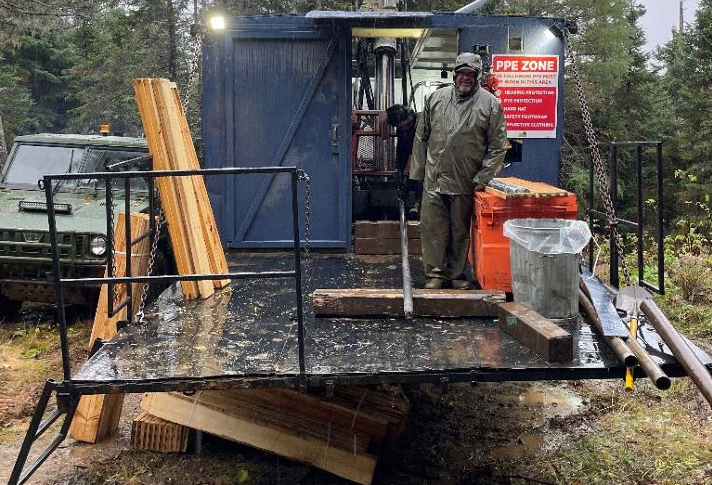NEWFOUNDLAND – Test results from
Marathon Gold’s Leprechaun and Marathon deposits at the company’s Valentine Lake gold camp demonstrate they are amenable to heap leaching.
Selected intervals of mineralized material were shipped to
SGS Canada last fall and highlights from the tests show a 72% gold extraction average for –25 mm crush size from the Leprechaun deposit after 160 days of leaching and 65% for the same crush size from the Marathon deposit.
Final gold recoveries are expected to be about 2% less after processing losses are considered. The latest results are more favourable than the 59% gold recovery used in a preliminary economic assessment completed in October 2018.
“Heap leaching of low grade gold material is a potential enhancement for the project in recovering gold that may otherwise go on a stockpile or waste dump,” Phillip Walford, Marathon’s president and CEO, said in a statement. “The PEA showed that traditional milling is expected to produce more than 85% of the gold for the project with the balance from the heap leach. These very good heap leach test results more than justify the consideration of heap leaching in our development plan and have improved the project economics.”
The Valentine Lake camp hosts four near surface, mainly pit shell constrained deposits with measured and indicated resources of 2.69 million oz. (45.2 million tonnes grading 1.85 g/t gold) and inferred resources of 1.53 million oz. (26.9 million tonnes grading 1.77 g/t gold).
The majority of the resources occur in the Marathon and Leprechaun deposits, both of which also have resources below the current pit shell and are open at depth and on strike. Gold mineralization has been traced down almost a vertical kilometre at Marathon and over 350 metres at Leprechaun.
The four deposits occur over a 20-km-long system of gold-bearing veins and much of the 240-km
2 property has had little exploration.
News of the test results lifted Marathon’s shares 6.8% to 94¢ in mid-morning trading. Marathon shares have traded in a 52-week range of 65¢ to $1.20. The company has a $152-million market capitalization.
Mick Carew of Haywood Securities raised his target price on the stock to $2.00 from $1.90 after the heap leach test results were released.
“We continue to like Marathon given it is one of the few undeveloped, potentially open pittable gold deposits in Canada and a prime takeover target for a mid-tier or large cap gold producer looking to add to their longer term production pipeline,” Carew writes in a note to clients.
“With further support from the column leach test results demonstrating the viability of lower grade material at both the Marathon and Leprechaun deposits being amenable to heap leaching, we have updated our model accordingly. We have added a small heap leach circuit (5,500 tonnes per day) that will process lower grade (>0.5 g/t gold) material that would otherwise be treated as waste. The heap leach circuit is expected to produce 21,000 oz. of gold annually over the life of the mine (11.75 years).”
Barry Allan of Laurentian Bank Securities has a $2.50 per share target on the stock. “The Valentine Lake gold project is a 4.2 million oz. resource that has the capacity to be a +200,000 oz. producer for more than 10 years, and is a major undeveloped open pit resource that should attract a good level of corporate interest once the prefeasibility study is completed.”
This story first appeared on www.NorthernMiner.com.





Comments